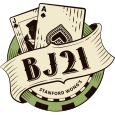I'll give it a shot...
newbie501,
Terminology: "DA2" means "double any two": that is, you can double down on any original two-card hand. Some casinos restrict doubling, especially on SD (single deck) and DD (double deck) games.
"NoDAS" means "No Double After Split": thus, in a NoDAS game, if you split 8's and draw a 3, you CANNOT double down on this 8-3 hand. Again, this rule is mostly seen in SD and DD games.
"Rule of 6 pen": often, SD games are dealt to a specified number of rounds to a given number of spots (not counting the dealer) in play. For instance, if three spots are played and the dealer deals 3 rounds, that's 3+3=6, so Rule of 6. For heads-up play, Ro6 gives 5 rounds between shuffles. Penetration determined this way is almost always seen only on SD games.
"1:5 spread" means that the ratio of the minimum bet to the maximum bet is 1 to 5. Thus, in the example I gave, the bets ranged from $35 to $175: note that 35/175 = 1/5. Of course, the "bets" here are "initial bets": it's understood that if you split and/or double down on a max bet, you'll actually be risking MORE than one max bet.
The game you're describing would be called 6D, H17, DA2, DAS, RSA (for resplit aces). The difference between dealing 4.5/6 (75% pen) and 5.5/6 (92% pen) is HUGE. You would be MUCH better off to play against those dealers giving the 5.5/6 pen, rather than the 4.5/6 pen.
The Index charts in BJFB are explained in the text. As an example, for 15 vs. X, the Hit/Stand chart shows an index of +7. This means that if you have 15 and the dealer shows an X (that is, any 10-value card), you have to compute the updated true count. If the TC is greater than or equal to +7, you would STAND; if less than +7, you would HIT.
Let's work an example. As the round starts, you see about 4 decks in the discard rack (and so there are 2 decks left in the shoe) and the running count (RC) is +12. That means that the TC at the start of the round is TC = RC/(decks in shoe) = +12/2 = +6. The dealer slings the cards, and you (sitting at first base) get the dreaded 9-6 vs. the dealer's 10. Looking at the three other players' cards on the table, you see 3-3, K-6, and 5-6. What's the current RC? Well, it's now the original +12 -2 (dealer's 10) +1 (your 9-6) +2 (3-3) +0 (K-6) +4 (5-6) = 12-2+1+2+0+4 = +17. Since the shoe has about 2 decks left, the TC is then +17/2 = +8.5 (actually a bit higher, since less than 2 decks are left in the shoe because some of the cards are now on the table). Since the TC is greater than or equal to +7, you STAND on your 15 (and hope the dealer busts). On the other hand, if the original RC had been only +1, after the cards are dealt (the same as above) the new RC would be 1-2+1+2+0+4 = +6, and the new TC would be +6/2 = +3. Now, the TC is less than the index of +7, so you HIT (and hope not to bust yourself).
As for your bankroll (BR)... $500 is nowhere near enough to allow you to sit down and play. If you could scrape together $3,000 and play on a $5 minimum 5.5/6 pen table, you could then spread 1:20 ($5 to $100) with a risk of ruin of 13.4% (this means that, if you play until you either double your BR or go broke, you have a 13.4% chance of first going broke). The optimal spread (assuming 4 total players) is to bet $5 for any TC<=+2, $10 at +3, $20 at +4, $25 at +5 & +6, $50 at +7 to +9, $75 at +10 to +12, and $100 at +13 and above. Note that, with this outstanding pen, you'll place a max bet nearly 3% of the time. This bet schedule gives an advantage of 2.117%, with a win rate of $27.55/hr (actually, per 100 rounds played).
What's the penetration like on the DD game? Also, what is the min bet? That might turn out to be the better play for you.
Hope this helps!
Dog Hand










